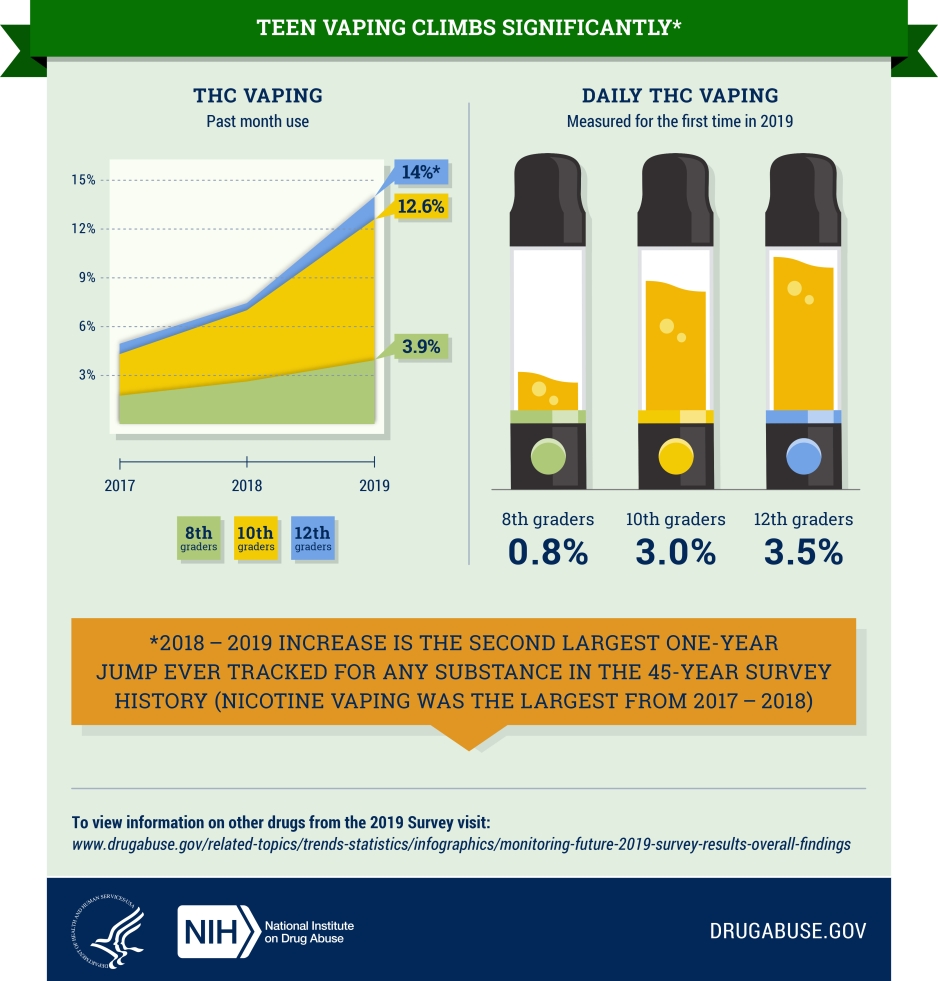This infographic of the NIH’s 2019 Monitoring the Future survey highlights drug use trends among the Nation’s youth for vaping.
For more information on MTF 2019 Survey findings on other drug topics:archives.nida.nih.gov/related-topics/trends-statistics/infographics/monitoring-future-2019-survey-results
Figure 1. Teen Vaping Climbs Significantly*
For both Nicotine and Marijuana (THC)
Daily nicotine vaping
Measured for the first time in 2019.
8th grade: 1.9%
10th grade: 6.9%
12th grade: 11.7%
Past month nicotine vaping
8th grade: 9.6%
10th grade: 19.9%
12th grade: 25.5%
Teen Vaping of Marijuana (THC)
Past month marijuana vaping
8th grade: 3.9%
10th grade: 12.6%
12th grade: 14%
The number of seniors who reported vaping marijuana during the past month increased from 7.5% in 2018 to 14% in 2019. This is the second largest one-year jump for any substance in the 45-year survey history, behind past month nicotine vaping (2017 to 2018).
Daily marijuana vaping
Daily marijuana vaping measured for the first time in 2019
8th grade: 0.8%
10th grade: 3.0%
12th grade: 3.5%
Why Do Teens Vape?
When asked why they vape, many teens said:
- to experiment (60.9%)
- because it tastes good (41.7%)
- to have a good time with friends (37.9%)
- to relax and relieve tension (37.4%) – representing an increase of nearly one-third since 2018
- to feel good or get high (29.0%)
- boredom (28.7%)
- it looks cool (15.2%)
- because they’re “hooked” (8.1%) which doubled from 2018 (3.6%)
- to help quit regular cigarettes (6.1%)
- regular cigarette use is not permitted (3.3%)
For more information on MTF 2019 Survey findings on other drug topics: archives.nida.nih.gov/related-topics/trends-statistics/infographics/monitoring-future-2019-survey-results
This publication is available for your use and may be reproduced in its entirety without permission from NIDA. Citation of the source is appreciated, using the following language: Source: National Institute on Drug Abuse; National Institutes of Health; U.S. Department of Health and Human Services.




